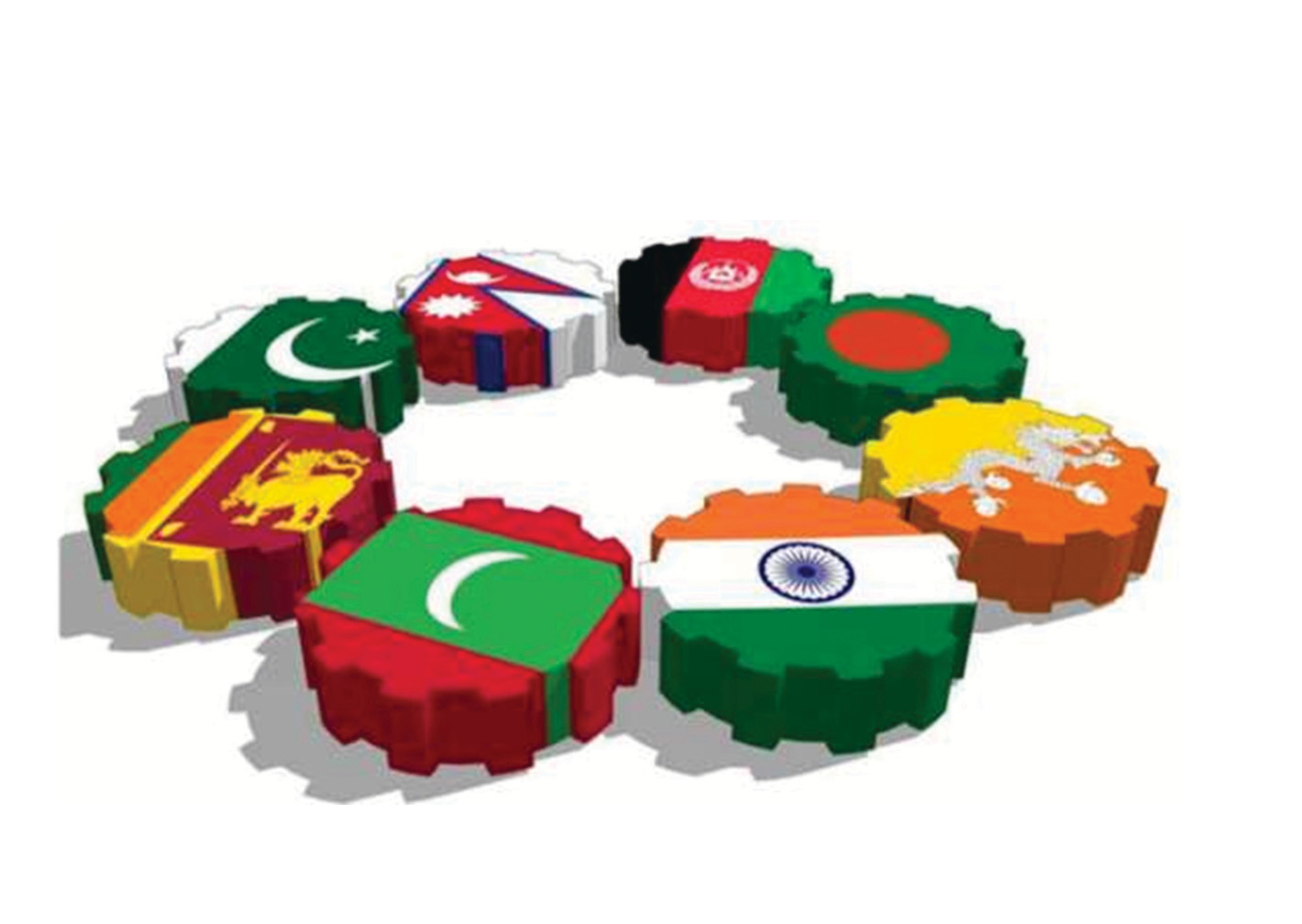
United with the objective of cooperation and economic integration among regional economies to create rapid economic progress, South Asian Association for Regional Cooperation (SAARC), however, remains at a standstill without any considerable achievement in the last three decades of its establishment. Established in 1985, the regional initiative suffered from political problem among member nations; mainly 'tensions' between India and Pakistan often holding back the SAARC processes. South Asia encompasses one fourth of the world's population but with considerable challenges and constraints in the region holding it back from economic prosperity. The eight-member regional initiative is lagging behind in its fight against common challenges of poverty, illiteracy, hunger, climate change, natural disaster, infrastructure bottlenecks and terrorism among others. But beyond this, the primary agenda of SAARC is economic integration for 'shared prosperity' of the region. However, the policies of individual nations are rigid towards opening up trade and investment. Against this backdrop, South Asia remains the least integrated region in the world. SAARC has set a long-term vision to enter into customs union and introduction of a common currency for the region to develop it as an economic union. But it seems far-fetched notion for member nations as policy barriers for trade and investment is high in South Asia. President of SAARC Chamber of Commerce and Industry, Suraj Vaidya opines that low investment in the region is not because of SAARC, it is due to the policies of individual countries. Citing an example of the government of Nepal and Bhutan to bar their citizens from investing abroad, Vaidya explains that Nepalis and Bhutanese cannot invest out of their country and this is not a problem created by SAARC but by their respective governments. "The countries in South Asia should liberalise a bit more and open up trade and investment. Sub-regional cooperation can be a complement to the regional initiative," states Vaidya. Under SAARC, there are various agreements underway from opening up trade and investment to developing common infrastructures (to cracking down the infrastructure bottleneck), the latter is considered a major constraint for growth in South Asian economies. For example, South Asian Free Trade Area (SAFTA) agreement signed in January 2004 which came into force since January 2006 envisioned creating a free trade area within the region bearing in mind the need to fix realistic and achievable targets. As per the agreement, customs duties on all goods were to be reduced to zero by 2016. But overall progress in terms of SAARC economic integration is very slow. Implementation of SAFTA is not encouraging as member states have not trimmed down the negative list. List of the sensitive products are longer, whether they are revenue sensitive or sensitive towards protection of domestic industries. In SAARC, it often takes longer for the ratification of agreements from member countries and SAARC Electricity Grid Connection for Energy Cooperation can be taken as an example.
Sub Regionalism: Complements or Deviates from the SAARC Process?
SAARC has not succeeded in terms of providing investment opportunities like the European Union or Association of Southeast Asian Nations (ASEAN). SAARC member countries have been moving ahead to sub-regional cooperation under SASEC (South Asia Sub-regional Economic Cooperation) and BBIN (Bangladesh Bhutan India Nepal) motor vehicle agreement, sub-regional energy cooperation among India, Bangladesh and Nepal. Vaidya explains 'sub-regional' cooperation complements SAARC. “SAARC Chamber of Commerce and Industry has been lobbying for regional flagship projects in each member nation. The project of establishing SAARC industrial park in each member country has gathered pace following the repeated attempt of SAARC Chamber of Commerce and Industry. As per the SAARC legislation if three countries agree to take forward any proposal then they can move ahead towards implementation. This is how SAARC allows member nations for sub-regional cooperation, which eventually gives a boost to the regional initiative.”
Track II diplomacy to intensify engagement
The stalling of SAARC has particularly highlighted the importance of Track II diplomacy. The initiatives of think tanks, academicians and private sector organisations like SAARC Chamber of Commerce and Industry can play an effective role in engaging and pressurising political leaders to take forward the regional initiative, according to Dr. Swarnim Wagle, former Vice Chairman of the National Planning Commission (NPC). Track II diplomacy or "backchannel diplomacy" is the practice of "non-governmental, informal and unofficial contacts and activities between private citizens or groups of individuals, sometimes called 'non-state actors'”.
New avenues
Experts and political leaders advise focus on five major areas to take the initiative forward. According to former Finance Minister Dr. Ram Sharan Mahat, SAARC countries have to lower the cost of trade. It is cheaper for South Asian countries to export to any other region in the world than within. India and Pakistan share a long border and account for 90% of the region’s economy; but trade cost between them is double than between China and the United States. And it is cheaper for Sri Lanka to trade with Brazil than with Nepal. This is because of poor connectivity and rigid barriers that persist not to facilitate exchange but to obstruct. "Relative to potential, we have few points of entry between countries. India and Pakistan can trade fewer than 150 products across the Wagah land border. We have not worked out transit agreements that allow a seamless transfer of goods; they often have to be trans-loaded, and clearance is slow. Over 50% of intra-regional imports are on the sensitive list shielded from tariff cuts, with no provision in SAFTA to phase them out. However, non-tariff barriers are becoming more of a hurdle these days. More than 85% of non-tariff barriers in South Asia are accounted for by technical barriers and sanitary measures. We must, therefore, enhance collaboration between customs and border control agencies responsible for quarantine, food tests, and quality standards," explains Dr. Wagle. Wagle further states that the SAARC member states have to unleash the potential in trade and services is huge, covering intra-regional tourism, education, healthcare, energy, transport and ICT services. Likewise, promotion of manufacturing base and business-friendly environment has been given emphasis for the sustainable growth of the South Asian economies. "Our Foreign Direct Investment regime has not helped intra-regional investment, which stands at less than 5% of the total FDI," says Wagle. It is worrying that developing countries are “de-industrialising” at levels of income much lower than attained by advanced countries when their share of manufacturing in employment peaked. While in the US or South Korea, such a share reached nearly 30% before decreasing, in India manufacturing employment lost ground after reaching just 13%. Indian Prime Minister Narendra Modi has launched a campaign to make India the next global hub in manufacturing by prioritising 25 sectors. This presents an opportunity for us to latch on to regional and global value chains (GVCs) according to Wagle. “Regional production sharing has already become a dominant model of production and exchange in the rest of Asia. It is time for us to catch up. Sectors like textiles, auto parts, electronics, food processing and pharmaceuticals carry low-hanging fruits." Former Finance Minister urges for enhancing connectivity and consolidating economic corridors as shared infrastructure for the region. "This is an important agenda for lagging regions like Nepal, Northeastern states of India, Afghanistan and Northwestern Pakistan. The logical point to start is by upgrading existing transport and trade corridors. These can be visualised as dynamic inter-country versions of Special Economic Zones where customs and institutional barriers are simplified and supporting infrastructure are superior. The first of such corridors could be the historical link from Kabul to Agartala linking Lahore, Delhi, Lukhnow, Kolkata and Dhaka with feeder motorways to Kathmandu and Thimpu," states Mahat. "South Asia is the least urbanised region in the world. While in 1990, we compared well with East Asia, our rate of 31% today is way below East Asian and global average of over 50%." According to the World Bank, the region is expected to require 7% - 10% of its GDP (or between US$1.3 to US$2 trillion) to fill these gaps between 2011 and 2020. In Nepal, the upper case estimate is 12% of GDP. It would, therefore, make sense to invest in regional infrastructure by pooling resources and identifying cost saving synergies. Energy cooperation is the major area to boost production and attain prosperity in the region. Production and exchange of energy could be a reliable anchor for regional integration in South Asia. In Nepal, we are greatly encouraged by the signing of the agreement with India on electric power trade and cross-border grid connectivity, as per Dr. Mahat. "Our main market, India isthe fourth-largest energy consumer in the world after China, the United States, and Russia. Despite having large reserves of coal and natural gas, India depends a lot on imported fossil fuels. Complementary utilisation of resources from neighbours such as Nepal’s clean hydro is therefore the most attractive option."One of the major agendas SAARC envisions is to enter into single currency area and a customs union, which is not a far-fetched notion. "This requires the trust deficit in our bilateral relationships to thaw. Let us show that we can fully implement SAFTA before contemplating a move towards the setting of common external tariffs (CET). Not all countries will gain equally at the same time from such a move, but we need to begin our homework at a pace that suits each of us," explains Dr. Mahat. According to him, the advantages of a common regional currency in eliminating currency risks, enhancing price competition, reducing trade costs and enhancing transparency are obvious. But on the flip side, a more serious challenge is the loss of policy flexibility when all countries are straight-jacketed in a uniform monetary policy. The preconditions for an optimum currency area require an unfettered mobility of labour and a form of fiscal integration that permits the transfer of funds to regions hit by asymmetric shocks. "After all, even the European Union had a mundane origin: it began by pooling coal and steel in the hope that deeper integration would ignite prosperity not only by making war unthinkable but materially impossible," asserts Mahat.



-1765706286.jpg)
-1765699753.jpg)

